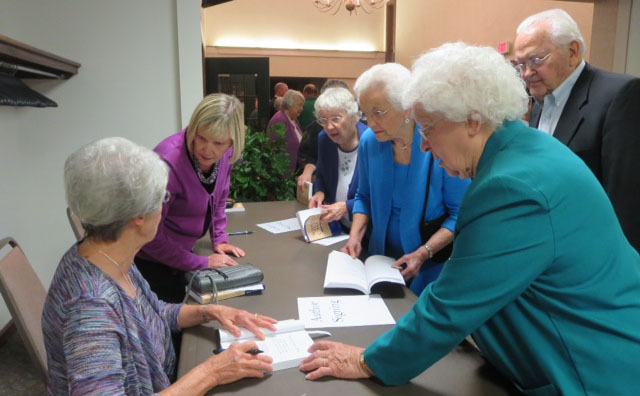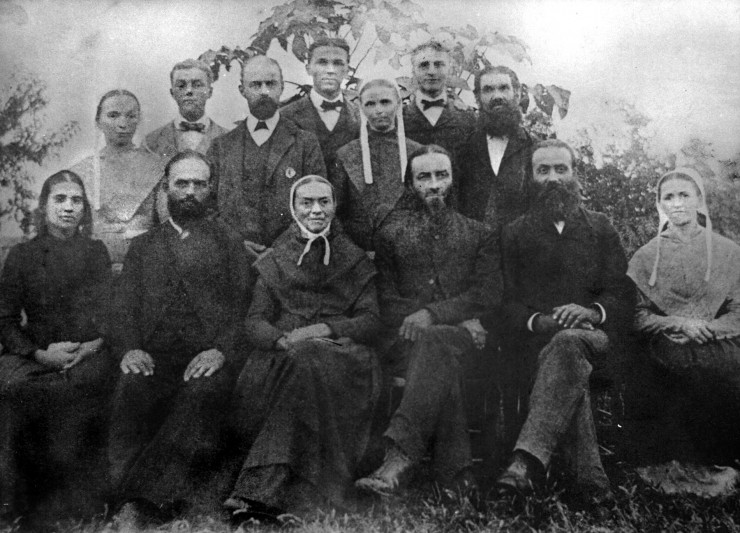My title, “Great Expectations,” is borrowed from Charles Dickens’ novel about the boy Pip, who had a hard life as an orphan, grew up, and was given a strong hint of coming “great expectations.”
Biographies can inspire us, enlarge our vision, give us new insight, even give us new dreams for our own lives, and they have been around for a long time. In some ways the biblical account from Genesis 12-50 is an extended family biography: these are the generational stories of Abraham and Sarah, Hagar and Ishmael, Isaac and Rebekah, Jacob and Esau—with all their wives and concubines and children. Although it is family biography, the major focus is on Abraham and his grandson Jacob and his great-grandson Joseph. This impressive family story has a major theme: “God keeps His promises—but there may be major delays!”
One of the amazing things about this multi-generational biography is that we are shown so much that is negative about the family: lies, cruelty, favoritism, cheating and general dysfunction. Finally, though, it is a story of faithfulness. Ultimately, there is reconciliation and forgiveness after all the dysfunction in the family. In this story of great expectations we see God at work in a very fallible family.
As this account suggests, biography is an ancient art. But it is a very persistent, continuing art form. Thomas Carlyle, the great nineteenth-century essayist, historian, and philosopher, thought that history was essentially the story of “Great Men”—and he really meant males! In his book On Heroes, Hero-Worship, and the Heroic in History, he writes, “Universal History, the history of what man has accomplished in this world, is at bottom the History of the Great Men who have worked here. They were the leaders of man, these great ones; the modellers, patterns, and in a wide sense creators, of whatsoever the general mass of men contrived to do or to attain . . .” (p. 239).
We find a very different approach to “great men” in Michael Hall’s 1988 biography The Last American Puritan: The Life of Increase Mather. Increase Mather was the father of the more famous seventeenth-century Puritan, Cotton Mather. But this biography of Increase Mather has a very different intent than the relatively short biographies which Carlyle wrote. In this biography he explores not only Increase Mather—but his family: his father Richard and his son Cotton, to name the most important ones. And woven into the biography is the significant impact of the Mather family on New England Puritanism.
I have not yet discussed the issue of authorial distance between an author and his or her subject, such as when our own Dr. Morris Sider wrote the biography, Messenger of Grace: A Biography of C. N. Hostetter, Jr. Dr. Sider notes something of the nature of the problem: “Hostetter’s life and work is so recent and was in many cases of a confidential nature.” Of his own vantage point, Sider says, “I write from the point of view of one who knew and admired him (indeed, he was a sort of model for me), but I write also as a historian who recognizes that historical writing requires that I put at least some distance between my subject and me (p. 8).”
To illustrate the issue further I will mention three very personal biographies. The first, James McBride’s The Color of Water: A Black Man’s Tribute to His White Mother, is a very affectionate—but also quite revelatory—biography of the author’s mother. Not much seems to be held back, and McBride reveals quite a bit about himself as he writes about his mother.
On the other hand, Ervin Stutzman, a friend and colleague of mine (who like me also grew up in Kansas) is quite circumspect in his Tobias of the Amish, the story of his quest for his father. Stutzman’s father was killed in an automobile accident when Ervin was three. The book is meticulously researched, carefully written and rewritten—but it says very little about the son and author, who keeps himself safely at some distance. But in his biography of his mother, Emma, Stutzman allows himself to be much more personally engaged. As he writes, “I chose to face into my fears when several readers of my first draft, particularly women, voiced the hope for more glimpses into Emma’s inner life, the interior conflicts that remained largely hidden from public view” (p. 15).” In the process of that exploration, Stutzman also reveals much more of his own inner life.
I began with a reference to Great Expectations, Dickens’ powerful tale of a poor boy who thinks he has a huge fortune coming—and somewhat loses his way. He is really a rather ordinary person who needs to reclaim his more authentic simpler self. Perhaps we, too, may learn more about the history of our time and place through seeing life as experienced by “ordinary people.” Our ordinary lives may also embody great expectations.
Paul Nisly is retired from many years of teaching and administration at Messiah College. He is a pastor and bishop in Mennonite Church U.S.A. and lives in Grantham, Pa. This article is excerpted from his talk at the annual meeting of the Historical Society in October.
 program. Providing a context for the release of the book of biographies, Paul Nisly, a retired English professor at Messiah College and long-time member of the Society, spoke on the art and purpose of biography.
program. Providing a context for the release of the book of biographies, Paul Nisly, a retired English professor at Messiah College and long-time member of the Society, spoke on the art and purpose of biography.
